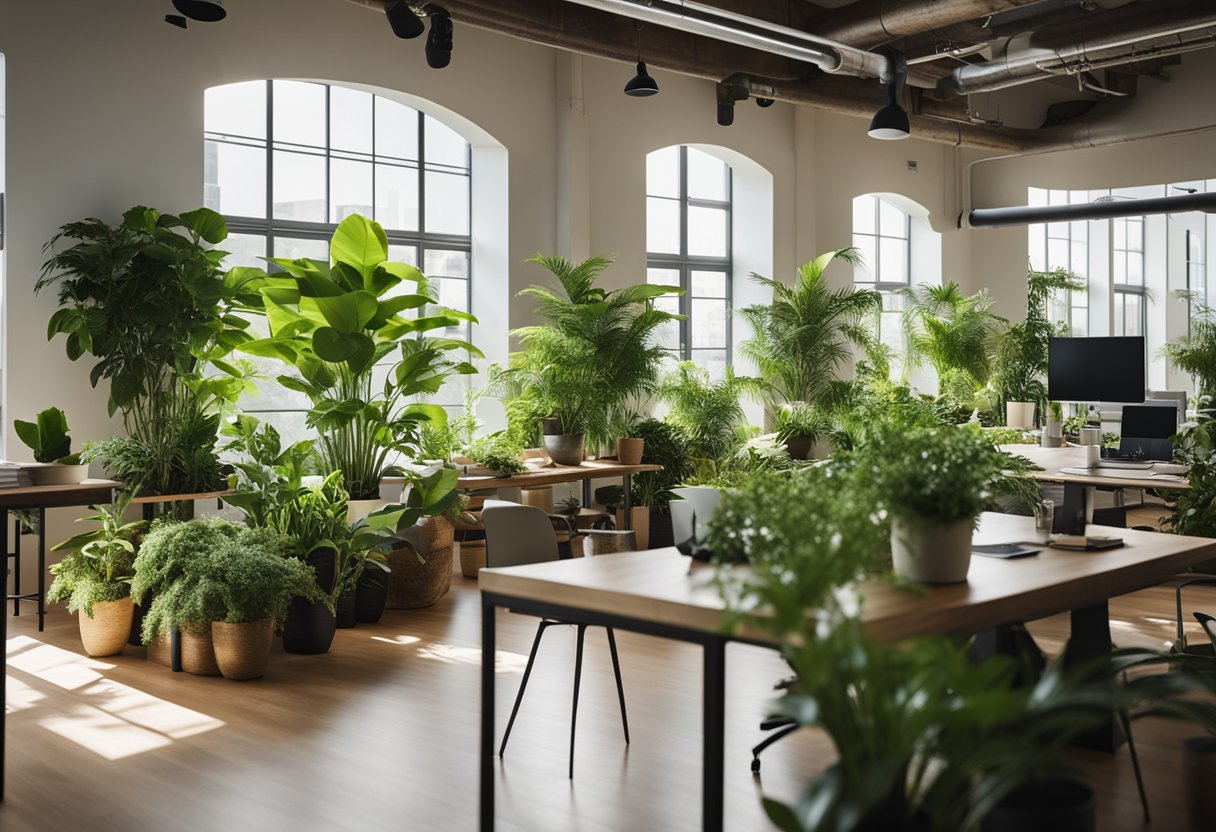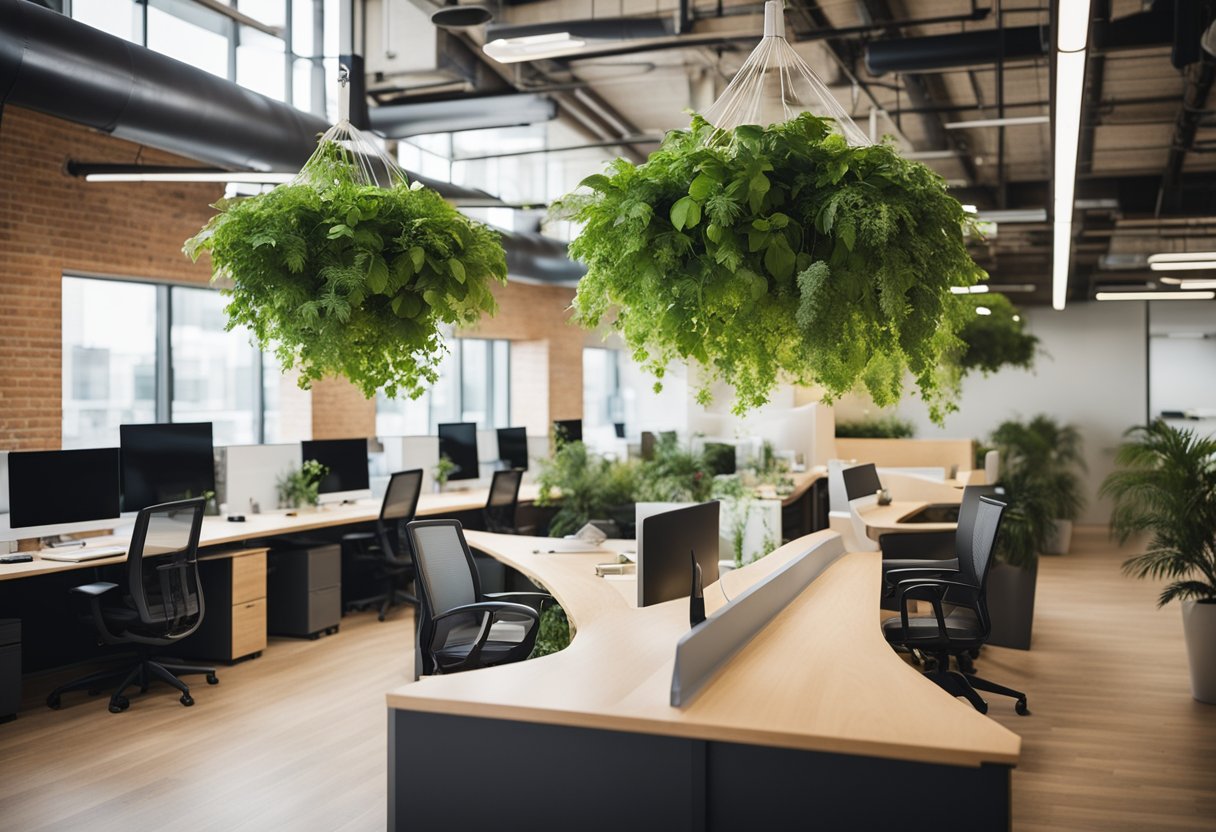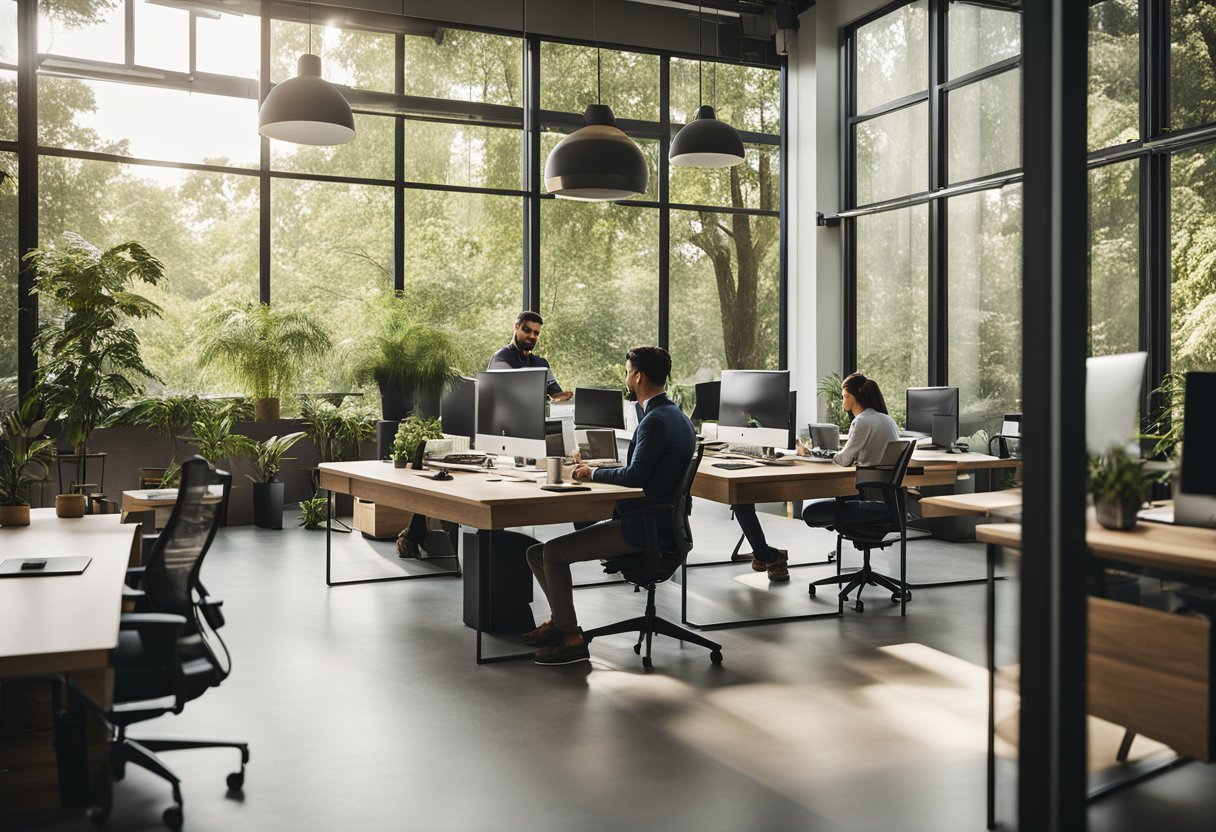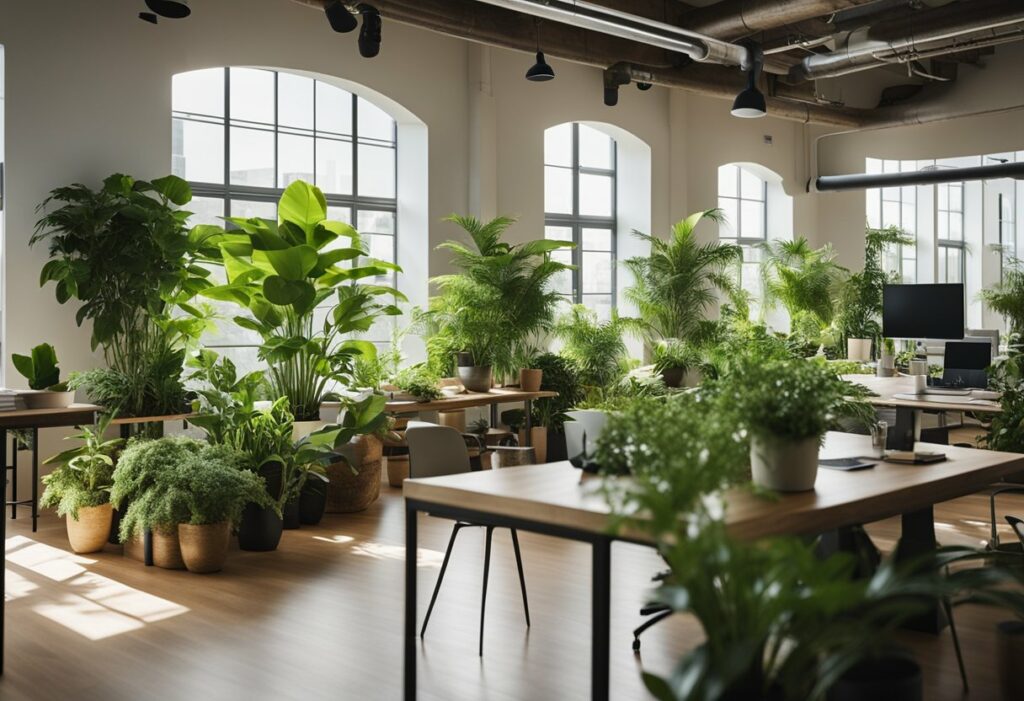Biophilic Office Design: Bringing Nature into the Workplace
If you’re looking to improve your office environment, biophilic office design may be the answer. Biophilic design is a concept that aims to connect people with nature by incorporating natural elements into the built environment. This design approach has been gaining popularity in recent years as research has shown that exposure to nature can have a positive impact on our well-being, productivity, and health.

Fundamentals of Biophilic Office Design include incorporating natural light, greenery, and natural materials into the workspace. Living walls, roof gardens, and water features can also be incorporated into the design. Earth colours can be used to create a calming atmosphere, and open spaces can be used to create a more spacious and inviting environment. By incorporating natural elements into the workspace, biophilic design can help reduce stress, boost creativity, and improve overall well-being.
Benefits and Implementation of biophilic office design are numerous. Research has shown that exposure to nature can reduce stress, lower blood pressure, and improve mental health. Biophilic design can also increase productivity by providing a more comfortable and inviting workspace. Implementation of biophilic design can vary depending on the specific needs of the workspace. Some companies may choose to incorporate living walls or green roofs, while others may opt for natural light and open spaces. Regardless of the specific implementation, biophilic design can help create a more pleasant and productive work environment.
Key Takeaways
- Biophilic office design aims to connect people with nature by incorporating natural elements into the built environment.
- The fundamentals of biophilic office design include incorporating natural light, greenery, and natural materials into the workspace.
- Biophilic office design has numerous benefits, including reducing stress, improving well-being, and increasing productivity.
Fundamentals of Biophilic Office Design

If you’re looking to create an office space that inspires and energises your team, then biophilic design is the way to go. Biophilic design is all about bringing nature into the workplace, and it’s a trend that’s gaining popularity in offices around the world. In this section, we’ll explore the fundamentals of biophilic office design.
Understanding Biophilia
At its core, biophilic design is about our innate connection to nature. Biophilia is the idea that humans have an instinctive love of nature, and that we thrive when we’re surrounded by natural elements. When we’re exposed to nature, our stress levels decrease, our creativity increases, and our overall wellbeing improves.
Key Elements of Biophilic Design
There are several key elements of biophilic design that you can incorporate into your office space. These include natural light, plants, water features, and natural materials such as wood, stone, and bamboo. By incorporating these elements into your office design, you can create a space that’s both calming and energising.
The Role of Natural Light
One of the most important elements of biophilic design is natural light. Natural light is essential for our wellbeing, and studies have shown that exposure to natural light can improve our mood, productivity, and overall health. When designing your office space, try to maximise the amount of natural light that enters the space. You can do this by positioning workstations near windows, using light-coloured walls and furniture, and avoiding heavy window treatments.
Incorporating Natural Materials
Another key element of biophilic design is the use of natural materials. Natural materials such as wood, stone, and bamboo can create a sense of warmth and comfort in your office space. When choosing materials for your office, try to opt for sustainable and eco-friendly options. Not only will this help to reduce your environmental impact, but it will also create a more natural and inviting space for your team.
In conclusion, biophilic design is all about creating a space that’s in harmony with nature. By incorporating natural elements such as light, plants, and natural materials into your office design, you can create a space that’s both calming and energising. So why not take the first step towards a more biophilic office today?
Benefits and Implementation

If you’re considering biophilic office design, you’re in for a treat. Not only does it look great, but it also has a range of benefits for both employees and the environment. In this section, we’ll explore some of the benefits of biophilic office design and strategies for implementing it in your workspace.
Enhancing Employee Wellbeing
One of the most significant benefits of biophilic office design is its impact on employee wellbeing. By incorporating natural elements such as plants, water features, and greenery into your workspace, you can create a more relaxing and calming environment. This can help to reduce stress levels, improve mental health, and boost overall wellbeing.
Boosting Productivity and Creativity
Biophilic office design can also have a positive impact on productivity and creativity. Studies have shown that exposure to natural light and vegetation can improve cognitive function and creativity, leading to better work performance. Additionally, incorporating natural shapes and forms into your workspace can help to stimulate the brain and encourage innovative thinking.
Strategies for Biophilic Integration
There are many ways to integrate biophilic design into your office space. Here are some strategies to consider:
- Incorporate living walls or vines to add greenery to your workspace
- Use natural lighting to create a more inviting and comfortable atmosphere
- Introduce water features such as fountains or aquariums to add a calming element to your space
- Use sustainable materials such as wood or bamboo to create a more eco-friendly workspace
- Create designated green spaces or outdoor areas for employees to enjoy
By implementing these strategies, you can create a workspace that is both aesthetically pleasing and beneficial for employee wellbeing and productivity. So why not give biophilic office design a try and see the positive impact it can have on your workspace?
Frequently Asked Questions

How can incorporating plant life into an office setting enhance employee wellbeing?
Introducing plant life into an office setting can have numerous benefits for employees. Not only do plants add a touch of natural beauty to the workplace, but they can also help reduce stress levels, improve air quality, and increase productivity. According to a study conducted by the University of Exeter, employees who work in offices with plants report a 15% increase in productivity compared to those who work in offices without greenery. Additionally, plants can help reduce noise levels and create a calming atmosphere, which can lead to increased employee satisfaction and wellbeing.
What are the core principles behind integrating natural elements in workplace design?
The core principles of biophilic office design involve incorporating natural elements into the workplace to create a more harmonious and productive environment. This can include elements such as natural light, water features, and greenery. The goal is to create a space that mimics the natural world, which can help reduce stress levels and boost employee wellbeing. By integrating natural elements into office design, companies can create a more attractive and welcoming space that promotes creativity, productivity, and overall wellbeing.
In what ways does biophilic design influence productivity and creativity in the office?
Biophilic office design has been shown to have a significant impact on both productivity and creativity in the workplace. By incorporating natural elements, such as plants and natural light, into the office space, employees are more likely to feel relaxed, focused, and inspired. This can lead to increased creativity and innovation, as well as improved problem-solving skills. Additionally, biophilic design can help reduce stress levels and promote better mental health, which can lead to increased productivity and overall job satisfaction.
Could you share some successful examples of biophilic elements in modern office interiors?
There are many successful examples of biophilic elements in modern office interiors. Some companies have incorporated living walls, which are vertical gardens that can be used to create a natural focal point in the office. Others have incorporated natural light by using skylights or large windows to bring the outdoors in. Additionally, some companies have used water features, such as fountains or indoor ponds, to create a calming and soothing atmosphere. These elements can be combined to create a unique and innovative office space that promotes productivity, creativity, and wellbeing.
How does sensory stimulation play a role in biophilic office environments?
Sensory stimulation plays a crucial role in biophilic office environments. By incorporating natural elements, such as plants, water features, and natural light, into the office space, employees are exposed to a variety of sensory experiences. This can include the sound of running water, the feel of natural materials, and the smell of fresh plants. These sensory experiences can help reduce stress levels and promote relaxation, which can lead to increased productivity and overall wellbeing.
What innovative materials are being used to create furniture that aligns with biophilic principles?
Innovative materials are being used to create furniture that aligns with biophilic principles. For example, some companies are using sustainable materials, such as bamboo or reclaimed wood, to create furniture that is both eco-friendly and aesthetically pleasing. Other companies are using materials that mimic natural textures and patterns, such as faux wood or stone, to create furniture that blends seamlessly with the natural elements in the office. Additionally, some companies are incorporating living plants into their furniture designs, such as desks or partitions, to create a more natural and inviting workspace.



